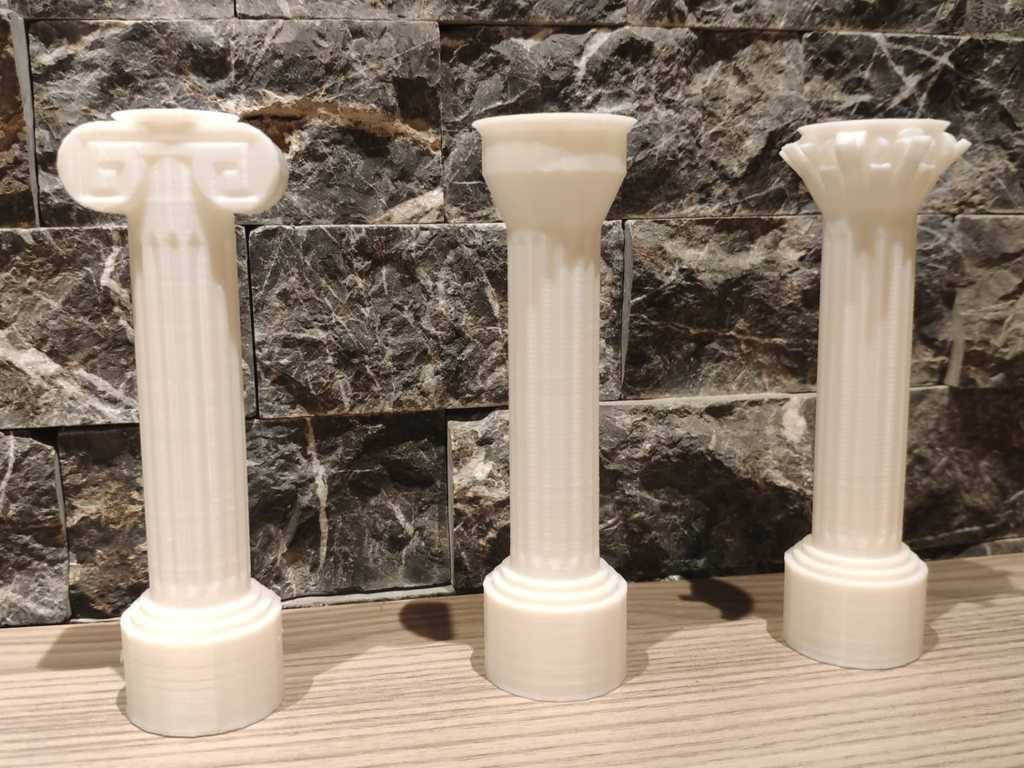
Lowpoly Ionic, Doric, Corinthian Columns
thingiverse
It is the low-poly and easy to print version of ionic, doric and corinthian columns. Doric and corinthian columns are supportless, only ionic column has some easy to clean supports. Just like chess knight is not photorealistic and just symbolic, goal of my that column designs are too. They are useful as a platform for putting something on it if you resize them, or you can use these as a simple part for your architectural designs. "Column A column or pillar in architecture and structural engineering is a structural element that transmits, through compression, the weight of the structure above to other structural elements below. In other words, a column is a compression member. The term column applies especially to a large round support (the shaft of the column) with a capital and a base or pedestal,[1] which is made of stone, or appearing to be so. A small wooden or metal support is typically called a post, and supports with a rectangular or other non-round section are usually called piers. Ionic Order The Ionic column is considerably more complex than the Doric or Tuscan. It usually has a base and the shaft is often fluted (it has grooves carved up its length). The capital features a volute, an ornament shaped like a scroll, at the four corners. The height-to-thickness ratio is around 9:1. Due to the more refined proportions and scroll capitals, the Ionic column is sometimes associated with academic buildings. Ionic style columns were used on the second level of the Colosseum. Doric Order The Doric order is the oldest and simplest of the classical orders. It is composed of a vertical cylinder that is wider at the bottom. It generally has neither a base nor a detailed capital. It is instead often topped with an inverted frustum of a shallow cone or a cylindrical band of carvings. It is often referred to as the masculine order because it is represented in the bottom level of the Colosseum and the Parthenon, and was therefore considered to be able to hold more weight. The height-to-thickness ratio is about 8:1. The shaft of a Doric Column is almost always fluted. Corinthian Order The Corinthian order is named for the Greek city-state of Corinth, to which it was connected in the period. However, according to the architectural historian Vitruvius, the column was created by the sculptor Callimachus, probably an Athenian, who drew acanthus leaves growing around a votive basket. In fact, the oldest known Corinthian capital was found in Bassae, dated at 427 BC. It is sometimes called the feminine order because it is on the top level of the Colosseum and holding up the least weight, and also has the slenderest ratio of thickness to height. Height to width ratio is about 10:1." (Wiki)
With this file you will be able to print Lowpoly Ionic, Doric, Corinthian Columns with your 3D printer. Click on the button and save the file on your computer to work, edit or customize your design. You can also find more 3D designs for printers on Lowpoly Ionic, Doric, Corinthian Columns.
